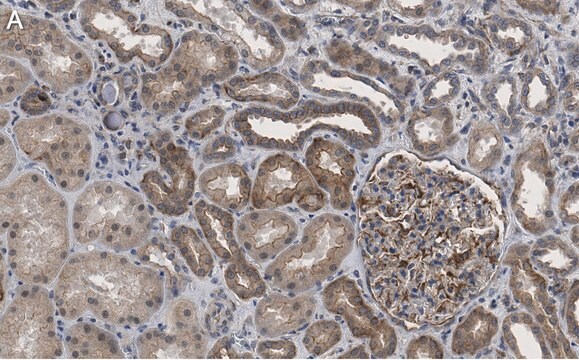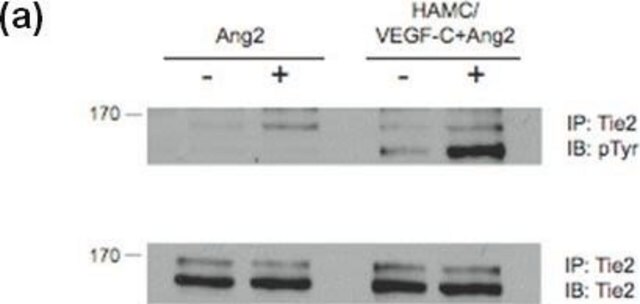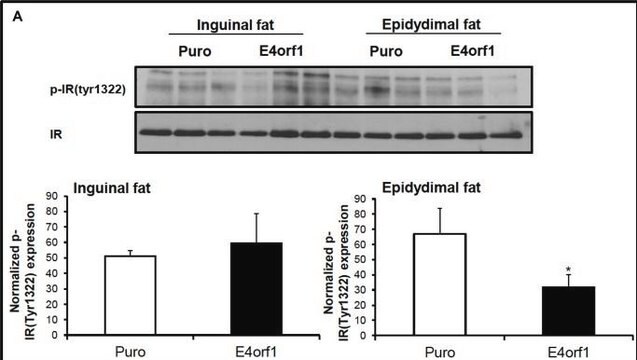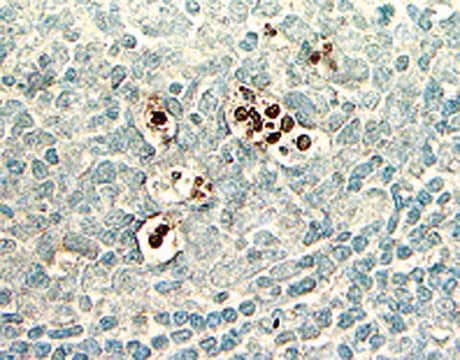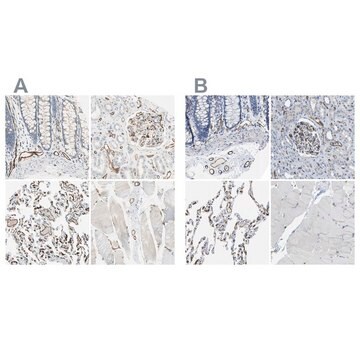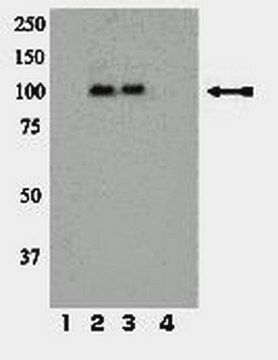04-299
Przeciwciało przeciwko receptorowi fosfo-insuliny (Tyr 1150/1151), klon 10C3
clone 10C3, Upstate®, from mouse
Synonim(y):
INSR
About This Item
Polecane produkty
pochodzenie biologiczne
mouse
Poziom jakości
forma przeciwciała
purified antibody
rodzaj przeciwciała
primary antibodies
klon
10C3, monoclonal
reaktywność gatunkowa
human
producent / nazwa handlowa
Upstate®
metody
activity assay: suitable
western blot: suitable
izotyp
IgG1
numer dostępu NCBI
numer dostępu UniProt
Warunki transportu
wet ice
docelowa modyfikacja potranslacyjna
phosphorylation (pTyr1150/pTyr1151)
informacje o genach
human ... INSR(3643)
Specyficzność
Immunogen
Zastosowanie
Jakość
Opis wartości docelowych
Postać fizyczna
Komentarz do analizy
Obejmuje lizat HEK293 poddany działaniu pervanadatu jako kontrolę pozytywną.
Informacje prawne
Nie możesz znaleźć właściwego produktu?
Wypróbuj nasz Narzędzie selektora produktów.
Kod klasy składowania
10 - Combustible liquids
Certyfikaty analizy (CoA)
Poszukaj Certyfikaty analizy (CoA), wpisując numer partii/serii produktów. Numery serii i partii można znaleźć na etykiecie produktu po słowach „seria” lub „partia”.
Masz już ten produkt?
Dokumenty związane z niedawno zakupionymi produktami zostały zamieszczone w Bibliotece dokumentów.
Nasz zespół naukowców ma doświadczenie we wszystkich obszarach badań, w tym w naukach przyrodniczych, materiałoznawstwie, syntezie chemicznej, chromatografii, analityce i wielu innych dziedzinach.
Skontaktuj się z zespołem ds. pomocy technicznej
